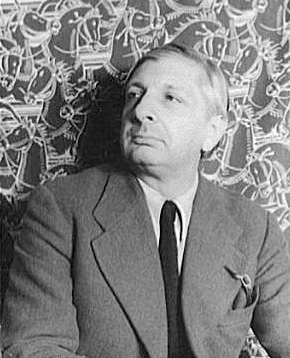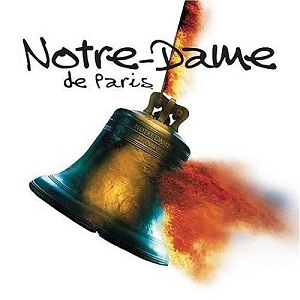Related Research Articles

La traviata is an opera in three acts by Giuseppe Verdi set to an Italian libretto by Francesco Maria Piave. It is based on La Dame aux camélias (1852), a play by Alexandre Dumas fils adapted from his own 1848 novel. The opera was originally titled Violetta, after the main character. It was first performed on 6 March 1853 at La Fenice opera house in Venice.

Giuseppe Maria Alberto Giorgio de Chirico was an Italian artist and writer born in Greece. In the years before World War I, he founded the scuola metafisica art movement, which profoundly influenced the surrealists. His best-known works often feature Roman arcades, long shadows, mannequins, trains, and illogical perspective. His imagery reflects his affinity for the philosophy of Arthur Schopenhauer and of Friedrich Nietzsche, and for the mythology of his birthplace.

The term Black Madonna or Black Virgin tends to refer to statues or paintings in Western Christendom of the Blessed Virgin Mary and the Infant Jesus, where both figures are depicted with dark skin. Examples of the Black Madonna can be found both in Catholic and Orthodox countries.

The University of Florence is an Italian public research university located in Florence, Italy. It comprises 12 schools and has around 50,000 students enrolled.

Corrado Segre was an Italian mathematician who is remembered today as a major contributor to the early development of algebraic geometry.

Notre-Dame de Paris is a sung-through French musical which debuted on 16 September 1998 in Paris. It is based upon the novel Notre-Dame de Paris by the French novelist Victor Hugo. The music was composed by Riccardo Cocciante and the lyrics are by Luc Plamondon.

Gian Maria Volonté was an Italian actor and activist, remembered for his versatility as a performer, his outspoken left-wing leanings, and fiery temper on- and off-screen. He is perhaps most famous outside Italy for his roles in four Spaghetti Western films: Ramón Rojo in Sergio Leone's A Fistful of Dollars (1964) and El Indio in Leone's For a Few Dollars More (1965), El Chuncho Munoz in Damiano Damiani's A Bullet for the General (1966) and Professor Brad Fletcher in Sergio Sollima's Face to Face (1967).
Cantacronache is a popular Italian band formed in Turin in 1958 by Fausto Amodei, Michele Straniero, Giorgio De Maria, Emilio Jona, Sergio Liberovici, and Margot.
Pier Luigi Pizzi is an Italian opera director, set and costume designer.

Princess Yolanda of Savoy was the eldest daughter of King Victor Emmanuel III of Italy.

Bernardo Antonio Vittone was an Italian architect and writer. He was one of the three most important Baroque architects active in the Piedmont region of Northern Italy; the other two were Filippo Juvarra and Guarino Guarini. The youngest of the three, Vittone was the only one who was born in Piedmont. He achieved a synthesis of the spatial inventiveness of Juvarra and the engineering ingenuity of Guarini, particularly in the design of his churches, the buildings for which he is best known.
Giorgio Bàrberi Squarotti was an Italian academic, literary critic and poet. He taught at the University of Turin from 1967 until his death in 2017. He was considered to be one of the most important literary critics of his time.

The Hunchback of Notre Dame is a musical play based on the 1831 novel of the same name written by Victor Hugo with songs from the 1996 Walt Disney Animation Studios film adaptation.

Paola Fabiana Ponce, known professionally as Lola Ponce, is an Argentine singer and actress.
Elena Ferrante is a pseudonymous Italian novelist. Ferrante's books, originally published in Italian, have been translated into many languages. Her four-book series of Neapolitan Novels are her most widely known works.
The Notre Dame de Paris Mosque is a dystopian novel written by Russian author Elena Chudinova. The novel takes place in 2048 in France, taken over and ruled by Muslim immigrants. The book is written from an anti-Islamic, and as the author asserts, Orthodox Christian viewpoint. Chudinova, who calls herself a committed Christian, calls the genre of this book, "both a novel and a mission".

Elena Petrovna Chudinova is a Russian writer, poet, publicist, and playwright.
Giorgio De Maria was an Italian musician and author. He is best known for his 1977 novel The Twenty Days of Turin. He was part of the musical group Cantacronache.

A Private Matter is an Italian novel by Beppe Fenoglio, first published posthumously in April 1963, two months after the author's death. The book deals with themes common to Fenoglio's work: the lives of partisans and the final period of the Second World War in Italy. Italo Calvino called A Private Matter, "the crowning of a whole generation's efforts to portray the resistance," and, "the novel that our generation wished we created."
Giorgio Amitrano is an Italian Japanologist, translator and essayist, specializing in Japanese language and literature.
References
- ↑ Giraldi, William (1 February 2017). "Holy Horror". Commonweal. Retrieved 12 October 2018.
- ↑ "Review: The Twenty Days of Turin by Giorgio de Maria". Three Crows Magazine. 28 September 2020.
- ↑ de Maria, Giorgio. The Twenty Days of Turin. p. xxi.[ full citation needed ]
- 1 2 Ripatrazone, Nick (4 January 2017). "'The Twenty Days of Turin': An Italian Classic's Chilling Prescience". Commonweal. Retrieved 12 October 2018.
- ↑ "Interview: Ramon Glazov on "The Twenty Days of Turin" | David Davis". 10 April 2017.
- ↑ "What I'm Reading: The Twenty Days of Turin, Giorgio de Maria | Stories | Notre Dame Magazine | University of Notre Dame".
- ↑ Sheehan, Jason (8 February 2017). "Nothing Is Quite What It Seems In Surreal, Unsettling 'Twenty Days'". NPR. Retrieved 12 October 2018.
- ↑ Berard, Peter (7 February 2017). ""Foul, Small-Minded Deities": On Giorgio De Maria's "The Twenty Days of Turin"". Los Angeles Review of Books. Retrieved 12 October 2018.
- ↑ "100 Great Works OF Dystopian Fiction". Vulture. 3 August 2017. Retrieved 12 October 2018.